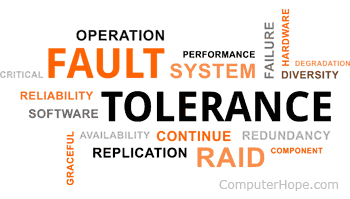
Wayne Lee
I'm Software Development Engineer, Backend Developer, software engineering major, Music LoverAbout Me

Wayne Lee is a Software Development Engineer who will be working at Google LLC. 2022.
Wayne (Kuo-Wei) Lee majored in Software Engineering and gradudated from Carnegie Mellon University.
His professional objective is to develop impactful products. He worked at several tech companies and delivered high-quality software, for example, Google LLC and Tiktok Inc.
Wayne is a team player and always willing to share his insights in a fast-paced working environment. He had experienced several practical and significant projects.
For instance, he expanded a Law Enforcement Response platform at Tiktok, where the project is architectured for the legal requests from Europe and the US government. Furthermore, he also has a machine learning, full-stack, and backend development background. With the industry experience and the knowledge of software engineering, he is clear about his goal and is ready for accepting all kinds of challenges.
Most importantly, Wayne is always passionate about creating impactful technologies and insightful stories.
1.5 +
Years of experience
Cups of coffee
100 %
Team player
15
Projects completed
Experience
Software Engineer (Google Cloud Platform)
- Google Cloud Platform
Software Engineer Intern (Tiktok Backend)
- Expanded Tiktok LERT (Law Enforcement Response Team) Platform to gather personal data (millions of Tiktok Videos, DM texts, Profiles, etc.) for handling legal requests or emergency disclosure requests. (Backend - Trust and Privacy Team)
- Launched more than 3 critical microservices for Tiktok LERT Platform from scratch using Golang and processed numerous requests
- Designed several technical solutions with broadly defined problems and involved part of the system architecture design
- Implemented in RPC, API development, distributed storage, FaaS, event bus, cloud engine, and EC2
- Restructured and dispatched large-scale user requests reliably by applying multiple message queues and MySQL binlog
- Collaborated with cross-disciplinary teams to bring more innovative ideas and deliver high-quality software
Software Engineer Intern (Computer Vision)
- Conducted research on object detection and person re-identification methodologies on real-time streaming and user-defined cameras network.
- Enhanced person re-identification (ReID) system pipeline for University Security Project (installed on the university campus) and measured 2048-dimension features of an entire person using more than 4 cameras simultaneously
- Evaluated 8+ approximation methods for ReID features and boosted the speed by 28% when over 10 people in a frame
- Introduced a ReID prototype consisting of offline data collection, on-the-fly search, and relational database
Software Engineer (Machine Learning)
- iOS app Bite! - An app for foodies, focusing on backend API design.
- iOS app CardCool, charted a smart trading system with data visualization, which predicts the NBA cards price trending on eBay based on 1M+ NBA players card.
- Upgraded the backend recommendation API by lifting 15% accuracy, where the API recommends the most promising cards
Automotive Research & Testing Center
Research Collaboration
https://www.artc.org.tw/
ChangHua, Taiwan
Student Researcher (Self-driving)
Developed self-locating system for automobile via 3D point cloud (voxel-based map localization) and RTAB-Map (Real-Time Appearance-Based Mapping) which runs on ROS in a RGB-D camera setting
Student Researcher (SLAM)
Implemented 3D map reconstruction by deep simultaneous localization, fetched data by drone.
Optimized semantic segmentation in 2D and 3D sky for SLAM enhancement
Teaching Assitant (Programming)
- Assisted Prof. Hwann-Tzong Chen in teaching and relevant tasks
- Designed exams and built course project frameworks regarding basic C/C++ programming, data structures and algorithms
- Answered questions during class time, office hour or on on-line course forum
Education
Master of Science in Software Engineering
Overall GPA: 3.6/4.0
Proficient in: Software Engineering, Distributed System & Data Science
Master of Science in Computer Science
Overall GPA: 4.21/4.30
Member of Vision and Learning Lab, supervised by Professor Hwann-Tzong Chen
Research Interests: Computer Vision, Machine Learning & Deep Learning
Bachelor of Science in Computer Science
Overall GPA: 3.63/4.30
Highlight courses: Algorithms, Data Structure, Computer Architecture, Operating System & Probability, etc.
Recent works
- All
- Projects
- Paper
Emergency Social Network

Emergency Social Network

Introduction
Emergency Social Network (ESN) is a web-based application on mobile devices. The system is designed for expediting the rescue process for wildfire incidents at California.
The ESN provides many useful features for the californian. For instance, a customized map where all the users or firefighters can have the spatial information regarding wildfire; A blog and an instagram-style image feeding board where users can post their images or findings.
For other intersting and useful functionalities, feel free to check our demonstration or reach out to us.
We're a team of 5 people, and build the entire system from scratch.
Demonstration video
My missions
I worked as a full stack development engineer in the team. My mission includes but not limit to back-end API design, writing integration tests, Database design, writing unit tests, and implementing front-end using vanillaJS.
Besides, I have built a useful functionalities in the customed map and design most of the UI of our system.
Last, we applied the Agile approach, which helps the team delivery faster.
Incident Response System

Incident Response System

Introduction
Incident Response System is a web-based application on mobile devices. The system is designed for 5 types of user, citizen, 911 dispatcher, police officer, firefighters and hospital nurse.
This is a fully functional and deployed website, where the functionalities are all implemented from scratch using REACT, Typescipt and MongoDB

My missions
I worked as a full stack development engineer in the team. My mission includes but not limit to back-end API design, writing integration tests, Database design, writing unit tests, and implementing front-end REACT component with storybook.
Besides, I have experienced with Google Map API with complicated and customized functionalities.
Last, we applied the LeSS approach (Large Scale Scrum), which helps the team reducing the integration time.
Distributed System

Fault-Tolerance Distributed System

Introduction
The project involved learning about replication, consistency, commercial fault-tolerant architectures, network partitioning, the CAP theorem, and reliability in both enterprise and embedded systems, with case studies surrounding Amazon EC2, Netflix, Therac-25, Three Mile Island, and more.
The technical skills includes the design and implementation of an industry-grade fault-tolerant distributed asynchronous system, with heartbeats, distributed consensus, total ordering, checkpointing, and logging to provide strong consistency for a distributed replicated application.
Also my implementation supports different replication styles (active, or hot-swap replication, as well as passive, or primary-backup replication), along with mechanisms to ensure no downtime even as crash faults are injected.
Demonstration video
My Contribution
The Fault-Tolerance System scope includes but not limit to
- Crash faults and message-loss faults
- Fault detection via heartbeats
- Active replication with replica consistency
- Passive replication with replica consistency
- Checkpointing, logging, duplicate detection
- Maintenance of group membership
- Fault injection to observe the system operate under faults
- Re-introduction of failed replicas to observe how recovery works
Silhouette-Net

Silhouette-Net

Introduction
3D hand pose estimation has received a lot of attention for its wide range of applications and has made great progress owing to the development of deep learning.
Existing approaches mainly consider different input modalities and settings, such as monocular RGB, multi-view RGB, depth, or point cloud, to provide sufficient cues for resolving variations caused by self occlusion and viewpoint change.
In contrast, this work aims to address the less-explored idea of using minimal information to estimate 3D hand poses.
We present a new architecture that automatically learns a guidance from implicit depth perception and solves the ambiguity of hand pose through end-to-end training.
The experimental results show that 3D hand poses can be accurately estimated from solely hand silhouettes without using depth maps.
Paper link
M.S. in Computer Science @ NTHU
The paper is written in 2019 and is defended as my master thesis.
The full name is Silhouette-Net: 3D Hand Pose Estimation from Silhouettes.
My supervisor includes Professor Hwann-Tzong Chen@National Tsing Hua University, Taiwan and Professor Koichi Ito @Tohoku University, Japan.
Recommendations
Get In Touch
I'm open to any opportunities!
Send me an email. 👋